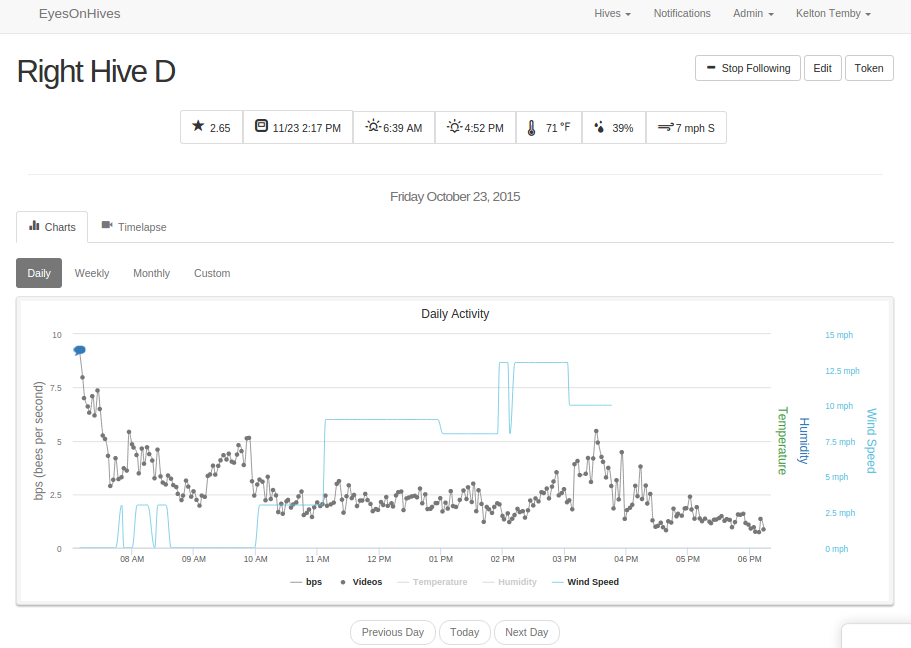This is very interesting to me as I've currently plugged a few sensors into my hive. Are you developing your own model to analysis the data or did you start with some published research?
What I've found is that location even a few miles apart has an impact on the hive performance, I'm toying with seeing if I can pull down some local weather data to use as some form of weighting.
Mine is just playing, not an ongoing endeavour like you appear to be doing.
Good luck.
Hi Domino, thank you for your interest, I'm glad you find the project interesting!!
Completely agree on microclimate being a big factor in bee activity, even just whether and when a hive gets sun throughout the day seems to have a big impact on activity. we found so far that wind is a pretty reasonable data point to pull from local weather stations, but temperature and humidity are going to have a significant error from the reality at the actual hive.
I like this picture which shows how wind modulates orientation activity (and caused it to not occur at any significant level).
Compare that to a regular day with a little less wind
We are developing all of our own analytics, partly because we're looking at hive activity differently to any of the invasive 'counter in entrance' approaches. By looking at the general activity of how many bees are flying at any one moment, we actually pick up behaviors like the hovering back and forth we see with orientation flights/spikes. Since we're the first to measure this way, we had to develop tools to identify this and other patterns.
The approach taken in the only other non-invasive approach we saw, the Intel paper, was interesting, but their approach had no way of scaling to run on a low power device, or pick up the activity of >50 bees at a time that's seen in robbing/orientation. It's fine and fun for the rest of the day, but we think the big changes in activity are pretty interesting!
We're talking with the good people at University of California Davis about further studies using the tools we're developing, to introduce what we're doing to academia. We are keen to see what citizen scientists and researchers will come up with too. Part of the platform is the ability to tag and flag different activities, so everyone can get involved in the research. It's also really fun to tackle these problems - we spend a lot of time in Matlab developing, testing and tweaking new algorithms! Also probably more, less-fun time porting them over to the server code and devices!



















































